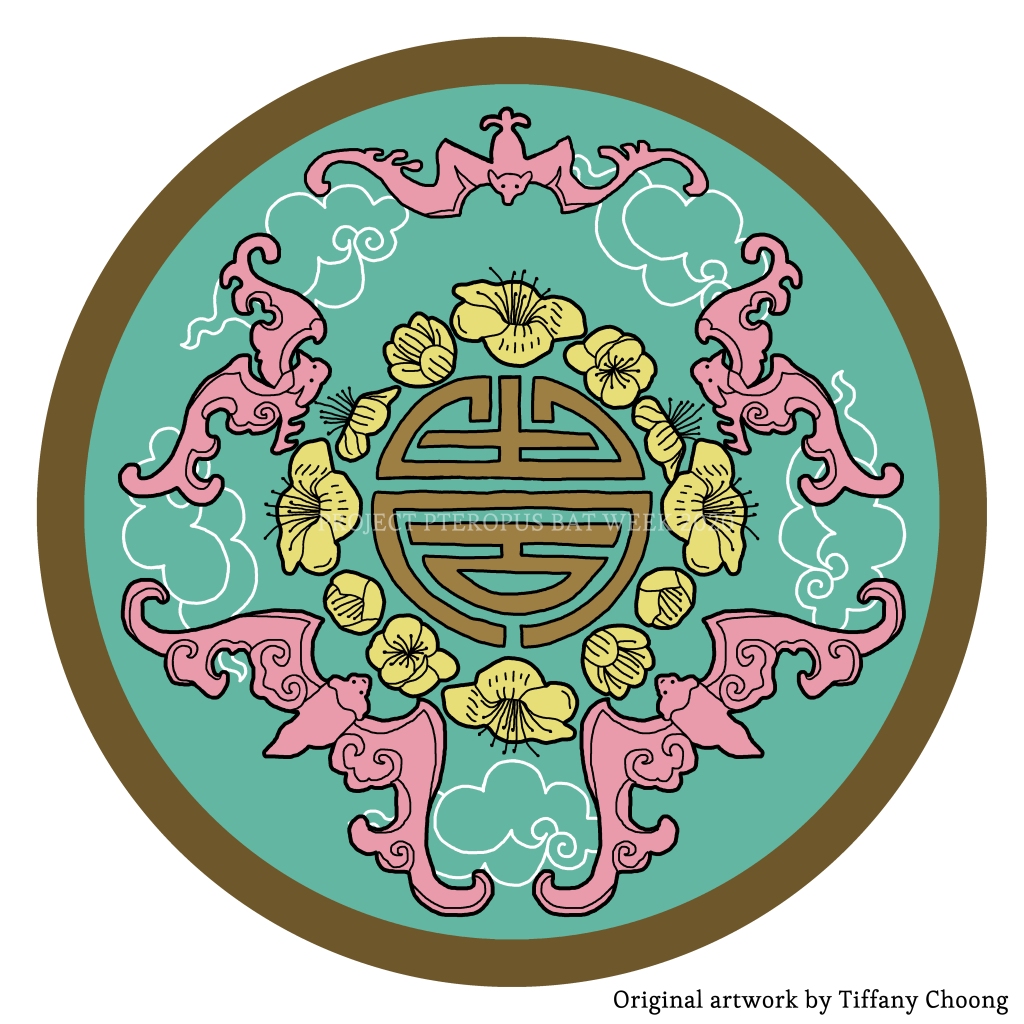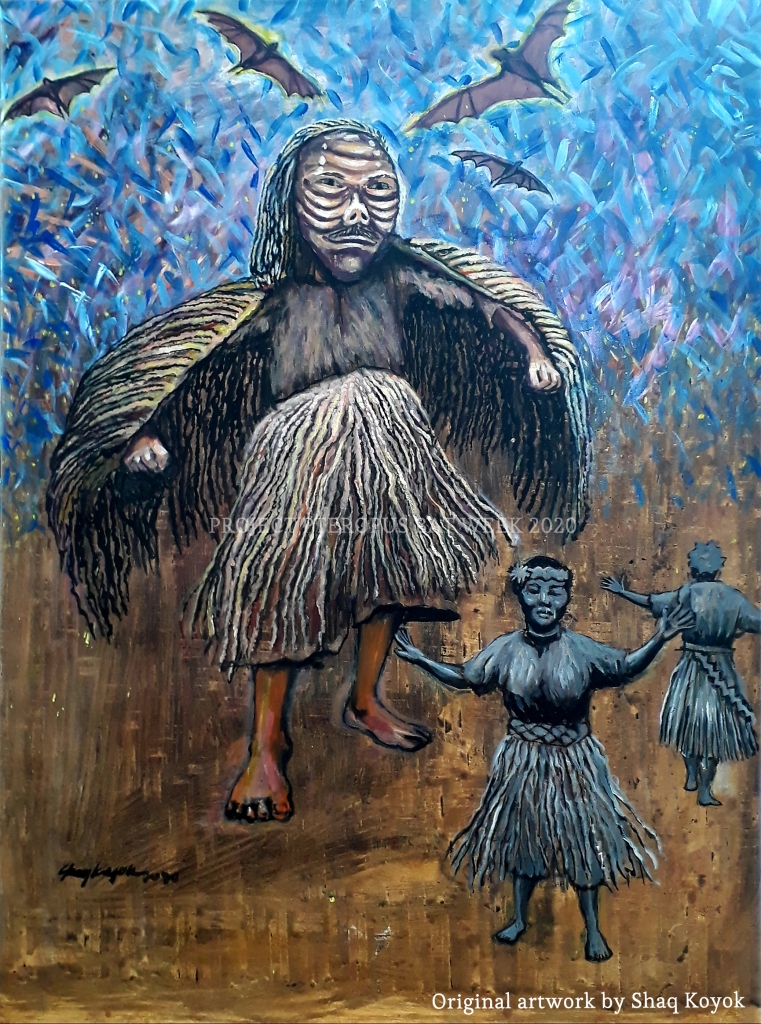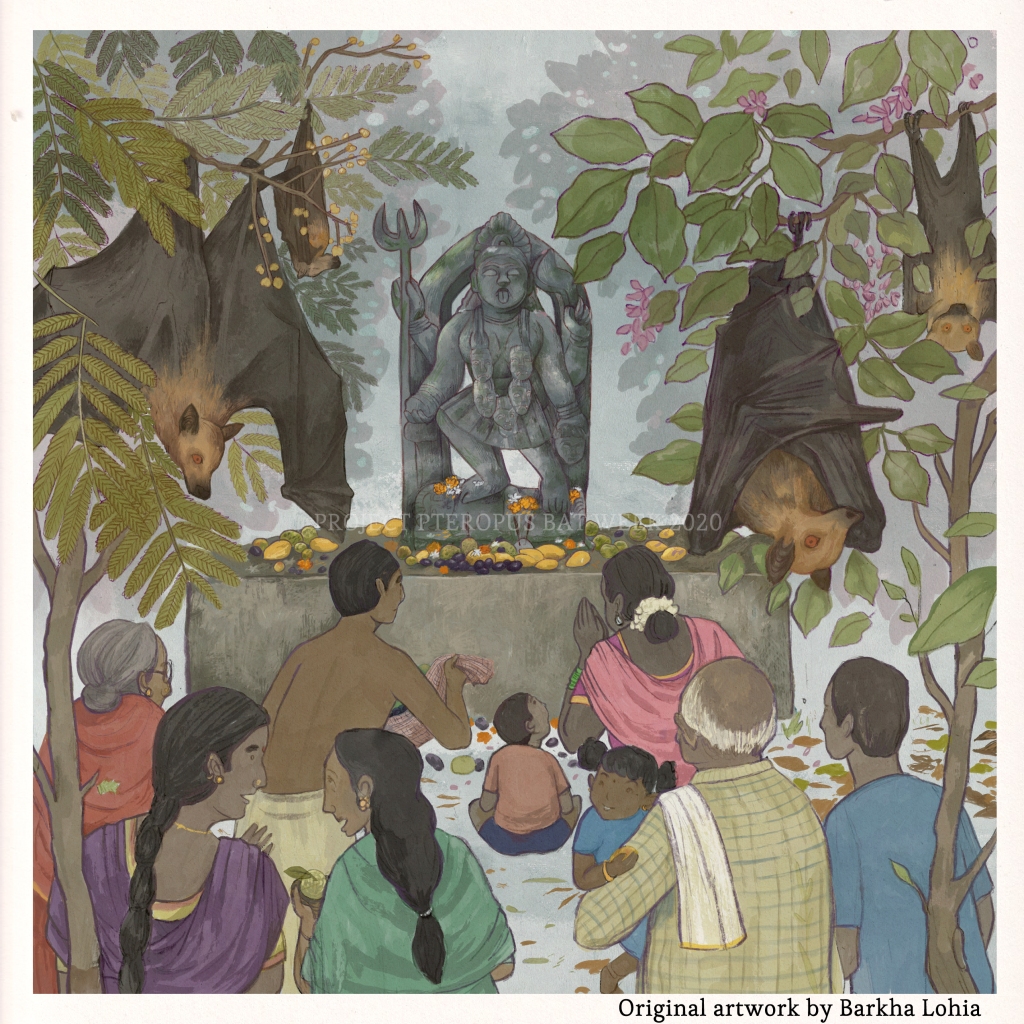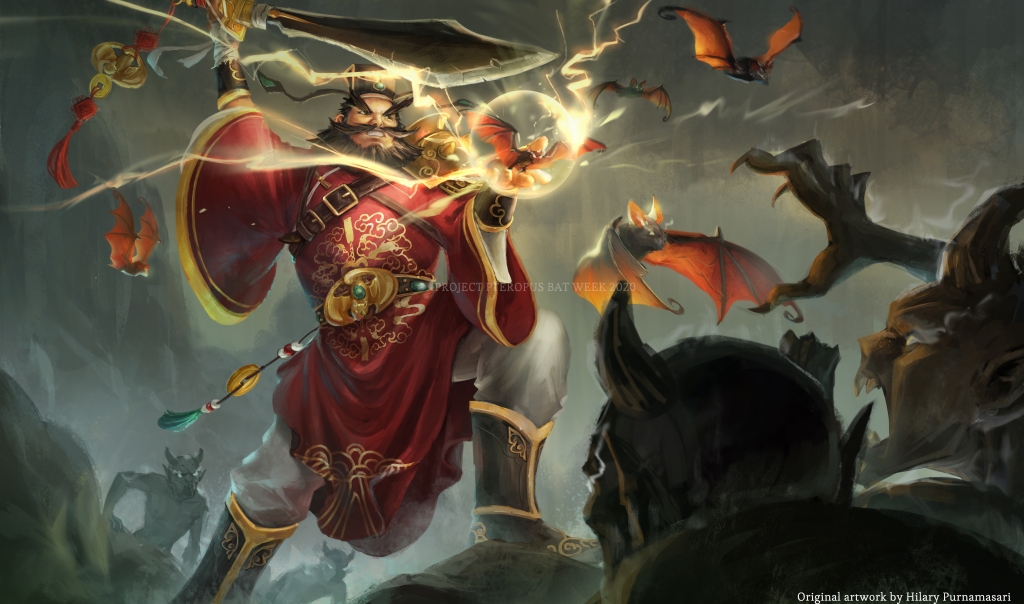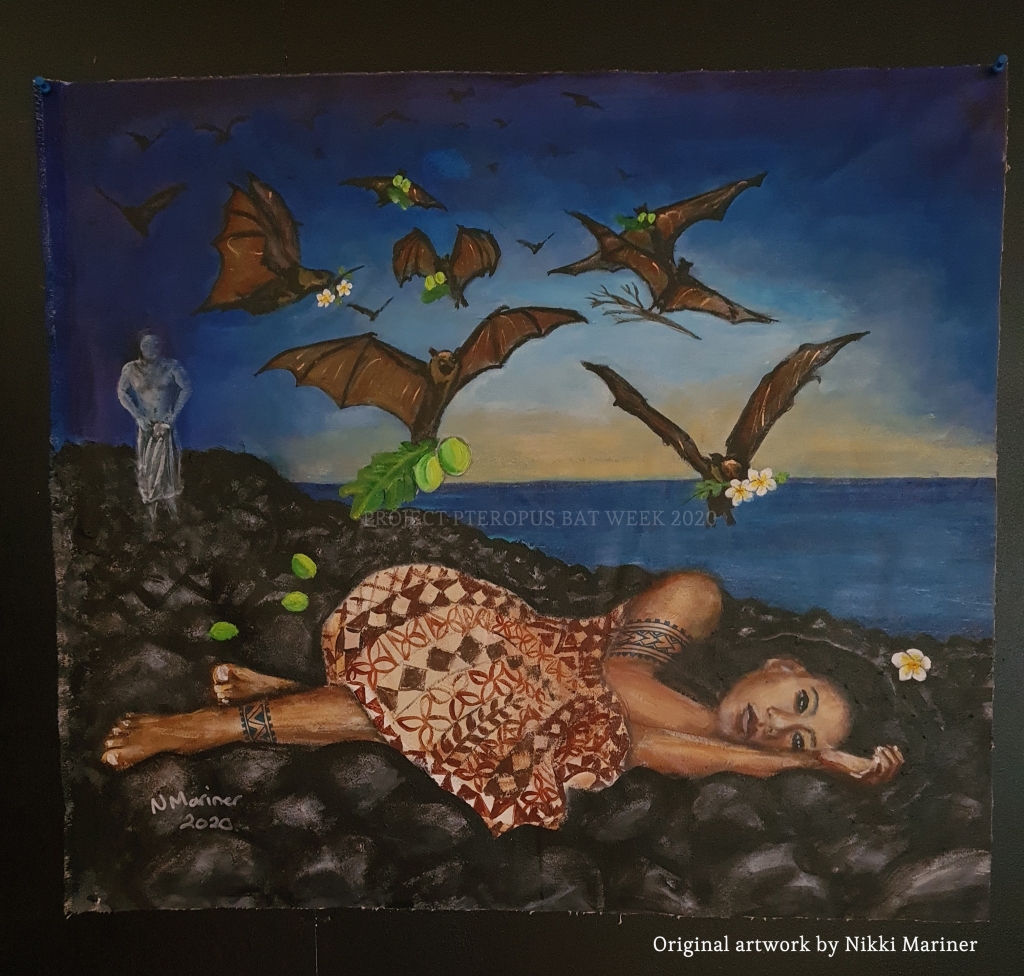Did you know that symbols and folklore featuring bats can be found throughout many Malaysian cultures, and also other cultures throughout the Asia-Pacific region? To celebrate Bat Week, we worked with seven different Asia-Pacific artists to create seven special illustrations of bats as cultural symbols and in folklore. Do support these artists by following them, and feel free to contact them should you desire any copies or reproductions of their artwork! And do you have any bat symbolism stories of your own to share? Get in touch and let us know!
1. Chinese Lucky Bats
Bats have been lucky symbols in Chinese culture, possibly as early as the 14th century, because of the homonymic wordplay: bat 蝠 (fú) sounds like blessing 福 (fú)! A bat entering the house is considered to bring good luck. Artistic depictions of these lucky bats can be found in architecture, ceramics, jewellery, textiles, and paintings in Chinese-influenced traditions throughout Southeast Asia. Bats are also often depicted in a group of five known as the ‘wu fu lin men’, symbolising the five blessings: health, wealth, longevity, love of virtue, and a peaceful death.
Design by Malaysian artist Tiffany Choong of Bulan Lifestyle.
Facebook: @BulanLifestyle
Instagram: @bulanlifestyle_art
Twitter: @BulanLifestyle
2. Mah Meri Dance and Song
The Mah Meri are an indigenous people from coastal Selangor in Peninsular Malaysia, who are known for their beautiful wood carvings which have gained UNESCO recognition, but they are also known for their dances. One such dance and accompanying song is the ‘kuang kuwait’, which features gentle backward strokes depicting flying foxes soaring across the sky. ‘Kuang’ is the Mah Meri name for flying fox (Pteropus spp.), and ‘kuwait’ describes the graceful way it flies.
Illustration by Malaysian Temuan visual artist and activist Shaq Koyok.
Facebook: @Shaq-Koyok-Art
Instagram: @shaqkoyok_art
Twitter: @ShaqKoyok
3. Zapin Dance Step
Zapin, the popular Malay folk dance in Johor, Peninsular Malaysia, has a ‘siku keluang’ (‘flying fox’s elbow’) dance step composed of wide, extended steps within the eight-beat phrase. This symbolises humility and a lesson in how one should not unnecessarily display one’s might, much like how a flying fox (Pteropus spp.) usually folds in its elbows when roosting, hiding away its majestic and spectacular wingspan of 1.5m. ‘Siku keluang’ is also the name of an artistic motif found in traditional Malay textiles such as songket and batik. If you look closely, this motif, which takes the form of an abstract zig-zag pattern, can be seen on the dancers’ beautiful costumes.
Illustration by Malaysian artist Amita Sevellaraja.
Facebook: @amita.sevellaraja
Instagram: @volapardus
Twitter: @Volapardus
4. Traditional Iban Tattoo Motif
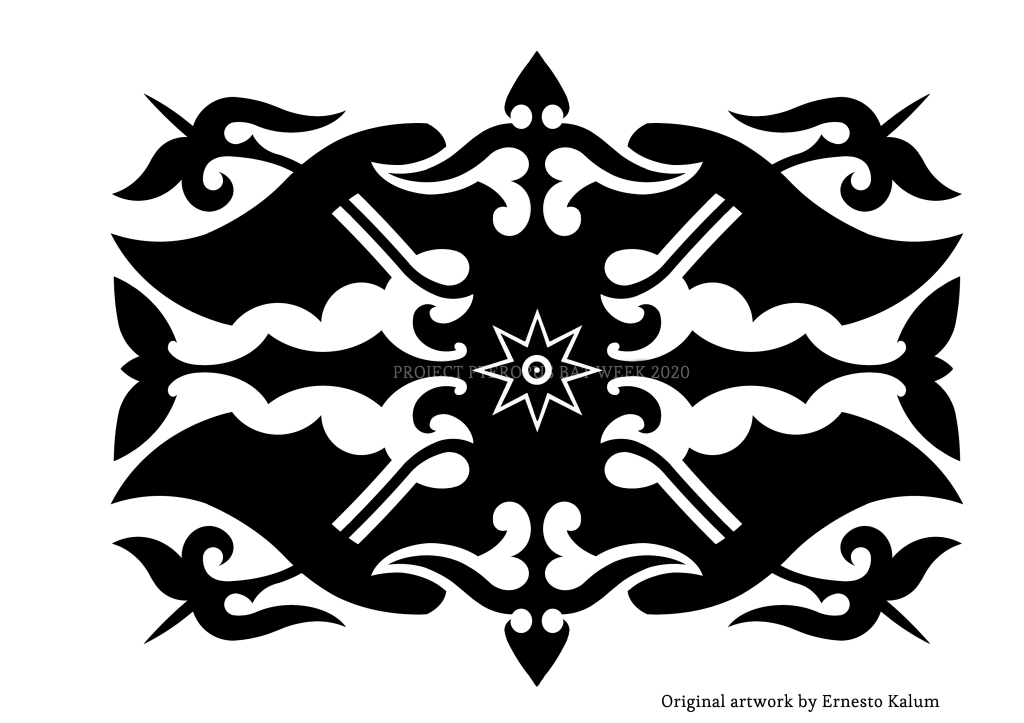
Sarawakian Iban culture in Malaysian Borneo features the large flying fox (Pteropus vampyrus), known locally as ‘semawa’, as a traditional tattoo motif. Bats were believed to act as spiritual messengers to the upper-world for shamans during the Gawai harvest festival, and a bat flying into a house was a shaman bringing good vibes. This particular ‘semawa’ motif is an original and reimagined tattoo, featuring the Kenyah ‘usung dian’ (durian fruit) motif incorporated into the centre of the design to symbolise the special mutualistic relationship between flying foxes and durian trees! Kenyah people would tattoo the ’usung dian’ motif on their shoulders to give them strength when carrying out baskets of durian fruits from the forest. Can you spot the bat mirror image and the stylised durian fruit within it?
Tattoo design by Malaysian Iban tattoo artist Ernesto Kalum of Borneo Headhunters Tattoo.
Facebook: @BorneoHeadHuntersTattooStudio
Instagram: @borneoheadhunterstattoo
Twitter: @BHeadhunters
5. Sacred Indian Flying Foxes
Bats are associated with Hindu worship in many parts of India. In Pudukottai, Tamil Nadu, Indian flying foxes (Pteropus giganteus) are sacred animals associated with Kali, goddess of destruction, whereas in Bihar they are considered bringers of wealth associated with Laxmi/Lakshmi, goddess of wealth. The bats serve as guardians protecting forest groves that they roost in, and devotees offer fruits to them such as guava (Psidium gujava) and mango (Mangifera indica). In Tamil Sangam literature, bats are often used as allegories to represent love.
Illustration by Indian artist Barkha Lohia.
Facebook: @barkha.lohia.1
Instagram: @barkhalohia
6. Legend of Zhong Kui
The legend of Zhong Kui from China dates back to the Tang Dynasty (618-907) about a man hoping to become a government official, who failed his imperial exams because of his ugly appearance despite scoring top of his class. In anguish at this injustice, he killed himself at the gates of the emperor’s palace. While in hell, the gods took pity on him and instead gave him abilities to hunt down and vanquish demons. When depicted in paintings, Zhong Kui is accompanied by five bats who act as his scouts and assistants. The bats will fly ahead of him to locate demons, then report back to him so he can find the demons and slay them.
Illustration by Indonesian artist Hilary Purnamasari.
Facebook: @hilary.purnamasari
Instagram: @aureliahilary
7. Princess Leutogi and the Flying Foxes
Samoans consider flying foxes to be saviours, as told in the legend of Leutogi. She was befriended by flying foxes (possibly Pteropus samoensis) when she warned them of the king’s hunting plans; they later returned the favour by extinguishing a fire as she was being burned alive. She was then exiled on a deserted island, on which a wandering spirit roamed. But the spirit did not harm Leutogi, as he expected her to die of starvation. In her time of need, the flying foxes helped her a second time by bringing food such as breadfruit and Tahitian chestnuts. Leutogi later honoured the bats by naming her son Tonumaipe’a, which means “rescued by flying foxes”. In this painting the bats also bring flowers, symbolic of love and respect in Samoa.
Painting by Samoan artist Nikki Mariner of Manamea Art Studio.
Facebook: @nikkimarinerart & @manameaartstudiosamoa
Instagram: @nikkimarinerart & @manameaartstudio
Twitter: @nikimariner
